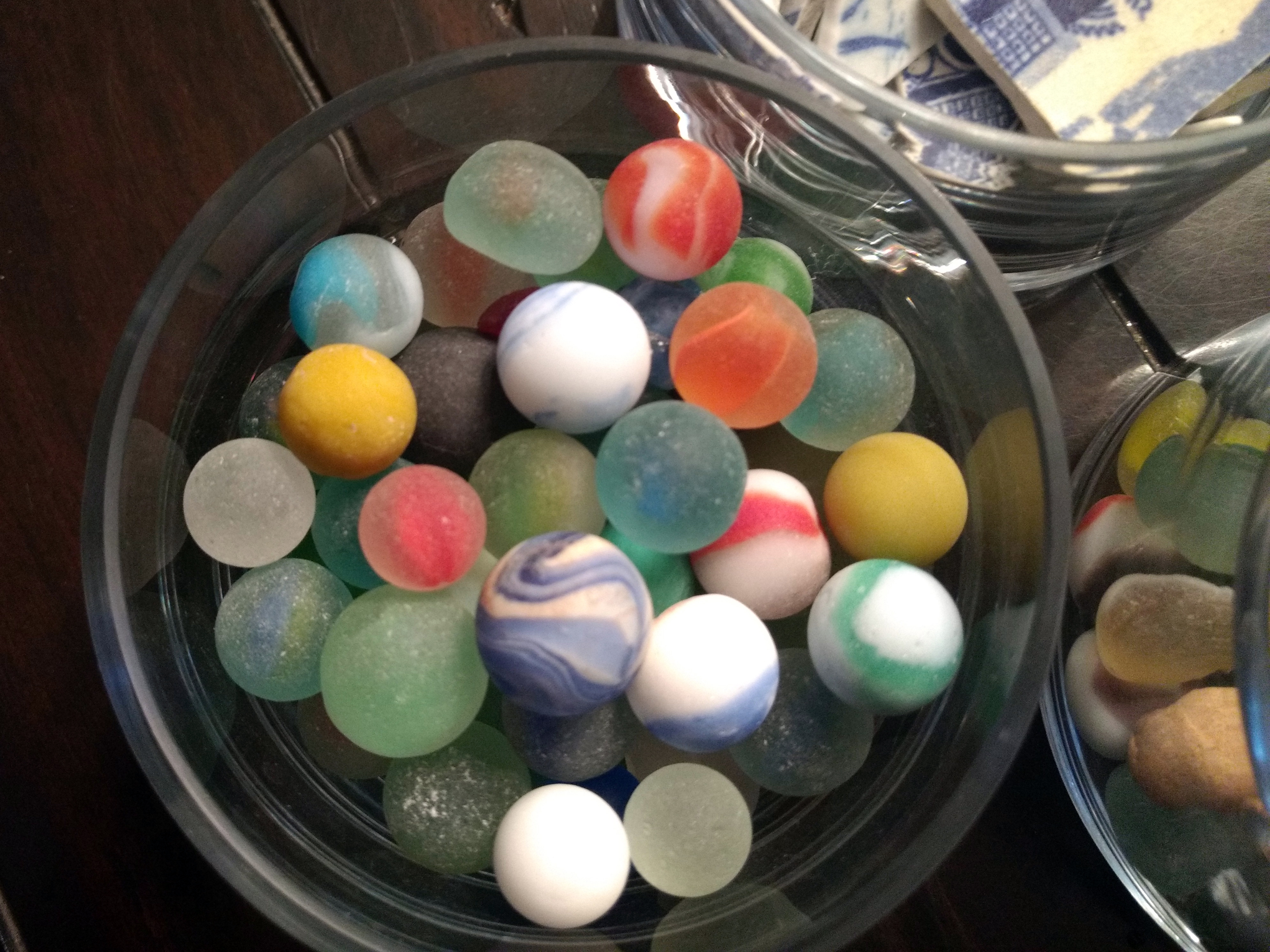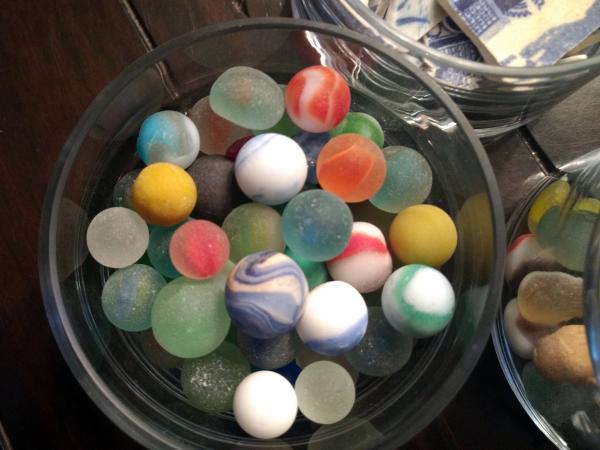KID REPORTERS’ NOTEBOOK
Glass Beach


Visitors from all over the world collect the sea glass that can be found on a beach near Fort Bragg, California.
When you find a piece of sea glass on the beach, it has been on a very long swim. It could be the remains of a bottle, jar, or something else made of glass that has been tossed around in the waves for years before ending up in your hand.
In the small town of Fort Bragg, in Northern California, glass tumbles through the waves from dump sites of the past, leaving polished sea glass on the shore. The Fort Bragg shoreline is believed to have the largest amount of sea glass in the world.
“It was a dump before, and now it’s the reason most people come to Fort Bragg,” local resident Victor Ramirez told me during a recent visit.
STORIES FROM THE PAST
In 1906, the great earthquake of nearby San Francisco hit this town hard, leaving tons of trash and rubble behind. During the clean-up, Fort Bragg pushed all of the garbage off the edge of the cliffs and into the ocean. This included parts of cars and buildings that had been demolished, bottles, cans, and much more.
The area continued to be a dumpsite until 1967. Fires were set regularly to decrease the amount of garbage. Eventually, items that did not break down were removed.
“The broken glass tumbled with the sand, rocks, and waves, and over many years became beautiful gems for our enjoyment,” said Kennette Roberts, a sea glass collector from Aptos, California. “A very exciting part of sea glass hunting for me is the fact that the glass tells a story from the past.”
The different colors of glass on the beach represent items discarded long ago, including milk bottles and traffic lights.
COLORFUL TREASURES
Each piece of glass found on “Glass Beach” is a different color and size. Each color represents an item discarded long ago.
The most common colors are clear, brown, and green. They are the remnants of milk, wine, and beer bottles. Red, orange, and yellow pieces are more difficult to find because they come from car tail lights and traffic signals. Kelly-green pieces scattered on the beach have evolved from lemon-lime sodas such as 7-Up, Sprite, and Mountain Dew.
“Much of the lavender sea glass came from pre-World War I canning jars and other glass containing a chemical called manganese,” Roberts noted about some of her favorite pieces found on Glass Beach.
Many people enjoy hunting for different shapes. One rare find is sea glass marble. Years ago, marbles were used to roll huge containers off of ships. Kids also used them to play marble games.
“When I was younger, I found this green and reddish piece that was shaped like a truck, and it was my favorite thing in the world," Ramirez said. “I would take it everywhere. My mom would get upset because I would forget to take it out of my pants, and she would find it while doing laundry.”
COLLECTING “SPECIAL PIECES”
Roberts has visited the beach five times. She first learned about Glass Beach while on Pinterest looking at sandy beach coves covered in sea glass. When she discovered that it was not too far from her home, she had to go and see it for herself.
Roberts displays the treasures she finds in glass containers in her “sea glass room.” She also searches for just the right pieces to use in the jewelry she makes with sea glass. She has found five marbles at Glass Beach. They are now part of her collection of more than 80 sea glass marbles.
“I can sit for hours on the glass-covered beach,” Roberts said, “sorting through millions of pieces of glass, picking out the special pieces I want to bring home.”
